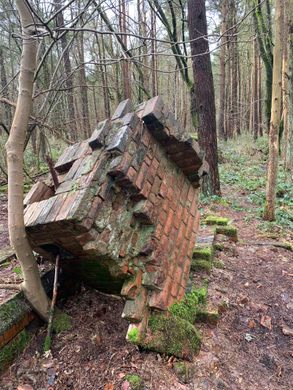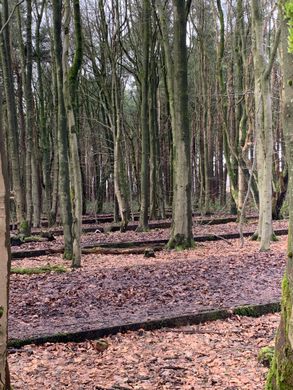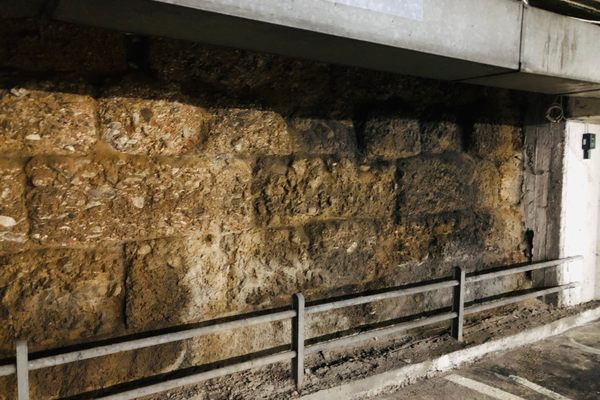Lodge Moor POW Camp Ruins
A brick foundation and piles of listing building materials are all that remains of this World War II POW camp.
In the midst of panoramic views of quintessential Derbyshire peaks and moors stands this odd patch of woods with a dark and dense history.
It is unnamed and unmarked, yet protected from the road by an old stone wall. If you follow a path into the woods, you will find rectangles of cement overgrown with grass and moss amongst the trees, steps that lead to nowhere, and the flooded remains of basements.
This is all that remains of Sheffield’s only Prisoner of War camp, once known as “Redmires” or the Lodge Moor Camp.
The camp was established at the end of World War II to house the last of the war’s POWs. Among those prisoners were several famed officers, including Admiral Karl Doenitz, head of the German navy and the man who took over the Third Reich after Hitler committed suicide.
To avoid persecution as a war criminal (as captain of a U-Boat), Doenitz feigned psychotic mental illness and got transferred to Wythenshawe Hospital in Manchester.
In the 1940s, after being captured, enemy German soldiers were transported by boat to England and then herded into trains to camps like the one at Sheffield. Once they arrived they were interrogated and classified by allegiance to the Nazi cause. The true believers were classified as black and non-believers as white, but the majority were gray.
Thousands of men were imprisoned in Sheffield long-term until their classification was determined.
The camp was allegedly better than life in battle. The POWs were fed and educated, though sleeping conditions were dire. Overcrowding forced prisoners to sleep outdoors in tents, and by September 1944, the rain turned the ground upon which many of the prisoners slept into bare mud.
Undeterred (or perhaps invigorated) by the conditions, numerous groups of “true believers” regularly plotted to sabotage the Allied war effort by escaping the camp. The remains of several attempted escape tunnels can still be explored near the camp walls to this day.
Know Before You Go
Best to park at the car park immediately after the Sportsman pub on Redmires Road. Or park in the pub’s own car park if you fancy a good ale and some excellent traditional pub food. The woods right next to it (facing the sports fields, to your right) have various overgrown paths that lead into them. Follow a path nearish the road.
Community Contributors
Added by
Edited by
The Atlas Obscura Podcast is Back!





















Follow us on Twitter to get the latest on the world's hidden wonders.
Like us on Facebook to get the latest on the world's hidden wonders.
Follow us on Twitter Like us on Facebook